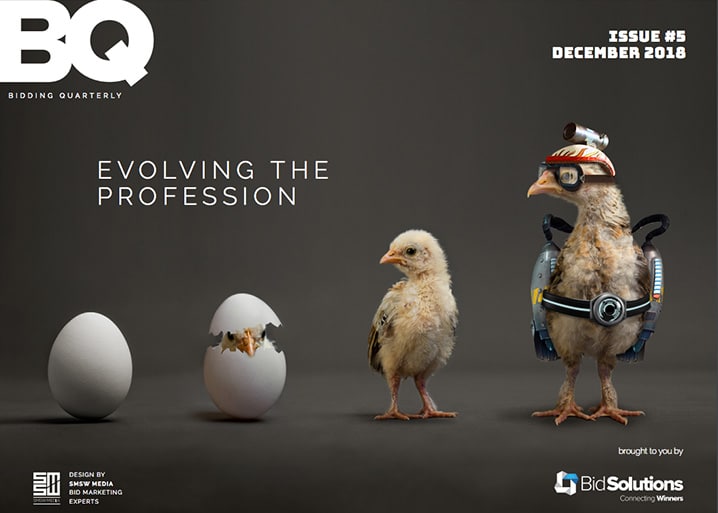Being a bid professional can be demoralising. It can feel like the sales team gets all the credit and the bid team’s contribution is overlooked or barely acknowledged. If we are going to evolve our profession, we need to raise our status and get real recognition of the contribution we bring.
When we have asked the bid professionals we work with about status and recognition, we come up with a fairly consistent set of issues. We hear that bid teams are:
- Given no or only late visibility of pending ITTs
- Not provided with any real insight of client issues and goals at the initiation of the bid process (and sometimes not at all)
- Not provided with a clear win strategy to work with and often have to work it out themselves
- Required to run with poorly qualified opportunities which result in poor win rates (the bid team’s fault!)
- Denied bringing together the full team for an effective bid kick-off because of “competing priorities”
- Treated as enemies when they suggest qualifying out of a bid.
As a result, bids are sent out which are much less effective than they could be. Win rates suffer and some of the blame rubs off on us.
We don’t have a magic wand to solve these problems. However, we have one idea which we think will help, and which will increase the understanding of the value bid professionals can bring.
Our solution is to seek to work more closely with the sales team and, in particular, offer a service to facilitate the early opportunity planning activity. Once identified, any important opportunity needs a brainstorming session to work out how best to capture it. If we facilitate this session, the sales team can focus on participating and not having to manage the session. This will lead to a better plan. Additionally, it will lead to more effective and more consistent sales planning across the organisation.
We should look to propose an agenda for the meeting to include:
- Client assessment (issues, goals, hot buttons, drivers).
- Our value to the client and our discriminators if we can identify them.
- Competitive assessment.
- SWOT for the opportunity.
- Our value proposition.
- Our win strategy and how we can influence the ITT.
- Action plan.
If we can help with the sales and opportunity planning process we will, automatically, understand more about the client and the win strategy. We will get early sight of potential bids. Additionally, we can influence the agenda to ensure that from an early stage the sales team is collecting the information we will need. We can encourage them to the harder questions such as our standing in the account. From this beginning, it should evolve into much better integration of the bid team into the sales planning processes.
Overall, we all win. What’s not to like?
A Wish List
The ten things I would like to happen in our profession and working environment in 2019:
- Closer integration of professional procurement and buying associations with the bid and proposal profession, with cross recognition, training and events.
- A requirement that Bid Managers must have APMP Foundation accreditation.
- Senior management recognising the value and significance of the bid team’s contribution to the business overall.
- A bidding and proposal writing apprenticeship scheme in place.
- Closer integration of the sales and bid team with the bid teams routinely sharing sales commissions.
- Bid Managers automatically following through as Transition Managers on large bids.
- APMP introduction of an additional Public Sector orientated, professional qualification. This should deal with bidding to Public Sector organisations in specific geographies, including effective challenges to procurement documents, process outcomes and decisions.
- Sales Leads writing the draft executive summary for every bid before it is allocated to a bid team.
- Standard (preferably free) collaboration tools for all bid teams.
- Software which could compress 10 pages of answer text into one page without losing any significant meaning or relevance to the question addressed.
Is this evolution or revolution which I am suggesting?
This article was written by Andy Haigh.

